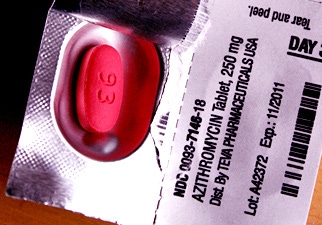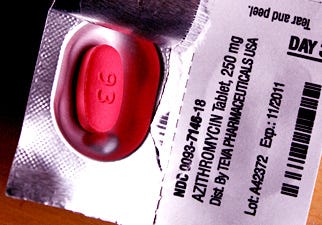Fighting an epidemic: New tools to inhibit counterfeiting
January 30, 2014


Drug blister pack
The U.S. has recently experienced two highly publicized examples of counterfeit drugs within its distribution system. Fake medications mimicking Lipitor tablets, a cholesterol-lowering medication and Procrit, an injectable drug used to stimulate red blood cell growth, made their way into the pharmaceutical supply chain. These situations might have been prevented if people at each link in the chain were able to check the source of the medications at each step in the distribution process.
Track-and-trace programs designed to enable and support electronic pedigree (e-pedigree) record-keeping requirements assign a unique serialized label to each container that can be read at each level of the supply chain to trace changes of ownership of a product from its manufacture to its use.
Omega Design Corp., a packaging machinery manufacturer located in Exton, PA, has proposed a new method of serialization that utilizes a serialized side label and a unique synchronized marking on the bottom of each container. This approach offers the advantage of using low-cost printed labels while being able to identify the actual containers within bundled labels.
“Cognex® In-Sight® ID readers meet the challenging requirements of the application, such as being able to read the 12 unique bottom codes at a time while the bundle is held by a robot,” said John Scholes, special projects manager for Omega Design.
Ensuring supply chain safety
There is an increasing problem in the U.S. of counterfeit drugs being intermingled with the legitimate drug supply. The World Health Organization estimates that up to 30 percent of prescription drugs in developing countries are counterfeit and, in developed countries, counterfeit drugs make up as much as 1 percent of the market.
Congress passed the Prescription Drug Marketing Act (PDMA) in 1987, creating a chain of custody tracking requirement for distributors of prescription drugs and related products. Enforcement of these requirements rests with the U.S. FDA. This requirement has become known as an e-pedigree: A statement of origin that identifies each prior sale, purchase or trade of a drug.
Global standards possible
The FDA is expected to eventually follow the e-pedigree specifications set by GS1, a leading global organization dedicated to the design and implementation of global standards and solutions to improve the efficiency and visibility of supply and demand chains globally and across sectors. The GS1 Healthcare automatic identification standard includes a Global Trade Item Number (GTIN), Global Location Number (GLN) and Global Data Synchronization Number (GDSN). The GS1 Healthcare User Group recommends “investing in camera-based code scanners to address specific needs for automatic identification in healthcare.”
The pharmaceutical industry is considering several methods of complying with these upcoming requirements. All track-and-trace programs assign each container a unique, serialized label that stays with it throughout its use. Soon after it is filled, the container becomes part of a series of larger packaging—usually bundles, boxes and pallets. Each package must be linked in a parent-child relationship.
Many pharmaceutical companies use radio frequency identification (RFID) tags for higher levels of packaging such as pallets and boxes. However, using RFID tags at the container and bundle level can substantially increase packaging costs. Another concern is the high cost of the RFID interrogators that must be used by pharmacists to verify the pedigree of the container used to fill each prescription.
In comparison, printing a digital code on a paper label has the advantage of much lower costs for both the label and the reader, high print-and-apply speeds, negligible failure rates and easy implementation.
Linking containers and bundles
In today’s typical pharmaceutical manufacturing line, several packaging processes, such as unscrambling, desiccant insertion, filling, cottoning, sealing and capping, may occur before a container finally receives its serialized label or RFID tag. Therefore, packagers must confirm, and not assume, that a container belongs on the packaging line before a serialized label is affixed to the side of a container.
Even after receiving its label, the way in which containers flow through other processes can compromise the downstream effort to link higher-level aggregate codes with individual units. To create a bundle, containers must flow through a shrink-bundling system that collates, wraps, and unitizes the containers. A single misplaced or rejected container, extracted after its place in the sequence had been established, might corrupt the integrity of every subsequent bundle.
The only way to guarantee the contents of a bundle is to first establish a bundle’s integrity and then identify its containers. But side labels pose a challenge for packagers trying to identify containers after a bundle has been created. For instance, how do you scan the codes on the middle containers in a 3 x 4 bundle where the labels are blocked from all sides?
Omega Design’s answer is to print a unique ID on the bottom of every empty container to complement—not replace—the serialized label affixed to the side of the container. The side label is referenced throughout the life of the container, providing the unique container ID as well as all of the relevant consumer information such as product identity, manufacturer, dosage, quantity, etc.
The unique bottom code enables the packager to easily identify containers after they’ve been aggregated within a bundle. When a bundle is created, the serialized side labels would be difficult to see but the unique ID on the bottom of the container is visible through the transparent shrinkwrap film.
Omega Design offers a solution for implementing this track-and-trace approach with a single unscrambler that can maintain full control over each container—its speed, height and orientation—while passing under the printhead and over the verification and rejection stations.
The unscrambler accepts bulk bottles and orients them sequentially on the production line. Omega unscramblers print and verify a unique ID on the bottom of every empty container. This unique ID contains enough information to keep track of the container temporarily on the packaging line. Once a larger, permanent and fully serialized label is applied to the container, a camera and serialized software management system puts the label code and bottom code in sync. When it’s time for final packaging, the shrink bundler groups and wraps the specified number of containers into a bundle. A robot lifts each bundle and passes it over another ID reader that identifies the containers in the bundle. A new label is then placed on the bundle that is linked to each package in the bundle, and a parent-child relationship is established.
Demanding vision application
The two ID readers used in this application must meet demanding requirements. The ID reader used on the unscrambler must accurately read data matrix codes while keeping up with a line that runs at 50 to 300 bottles/min. The bundler provides an even more challenging application because the ID reader must read all of the bottles in the bundle with one image.
“We chose Cognex 5000 Series vision systems for this application because our experience shows that they provide the required accuracy for reading 2D Data Matrix codes,” Scholes said.
In-Sight vision systems incorporate Cognex IDMax® Data Matrix code reading software, based on PatMax® technology, to handle a wide range of potential degradations to the appearance of the code and provide robust and reliable decoding under all conditions.
Omega Design uses the In-Sight 5410 ID reader on the unscrambler and the higher performance In-Sight 5603 on the bundler application. Cognex also provides a full line of fixed and handheld ID readers that can be used to verify the origin of the bottle at any point in the supply chain.
Shaun Keperling of Omega Design used Cognex’s spreadsheet-based programming interface to overlay images of the 12 inspected codes, provide pass/fail indications for each code, and also provide a pass/fail for the entire bundle on the user interface.
“The spreadsheet interface is very flexible,” Keperling says. The program kicks off when the vision system receives a digital signal from the programmable logic controller (PLC) that a bundle is in position for inspection. The program first captures the image of the bottom of the bundle containing 12 2D codes. Then, 12 different inspection tools are run to read the codes. If all of the codes are read, then a digital output is sent back to the PLC. The PLC instructs the robot to place the bundle on the pass conveyor. The vision system uploads the container IDs to a computer where they are managed by track-and-trace software. If the inspection fails, the controlling PLC instructs the robot to reposition the bundle two more times and re-triggers the inspection. If these inspections also fail, then the bundle is channeled to a reject chute.
“The primary goal of FDA standards and e-pedigree laws is to protect consumers from contaminated medicine and counterfeit drugs,” Scholes concludes. “To do this, companies must keep track of their products along the supply chain down to the unit or container level.
“Although compliance dates and final standards are constantly changing and vary per state, the pharmaceutical industry widely accepts that the definitive requirement will involve serialization,” Scholes says. “The new approach described here is a cost-effective, easy-to-implement method of incorporating 2D data matrix serialization within new and existing packaging lines without compromising machine speeds or accuracy.”
John Lewis is market development manager at Cognex. For more information email him at [email protected].
MORE INFORMATION IS AVAILABLE:
Cognex, 508/650-4141. www.cognex.com
Omega Design, 800/346-0191. www.omegadesign.com
.
About the Author(s)
You May Also Like


